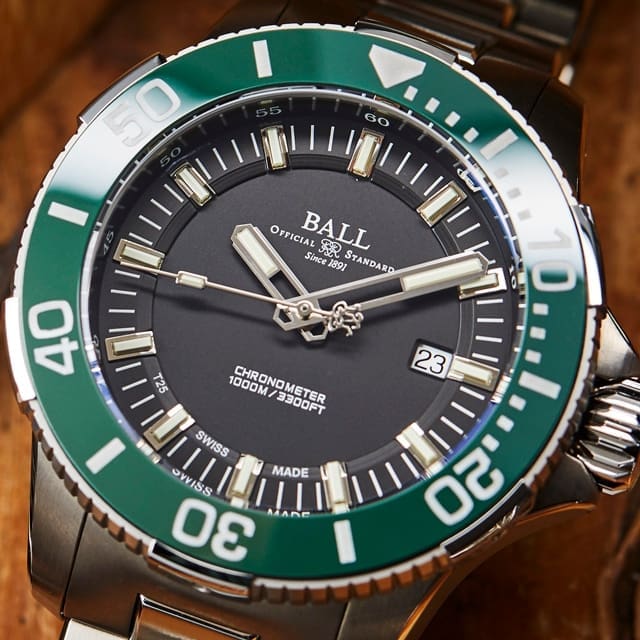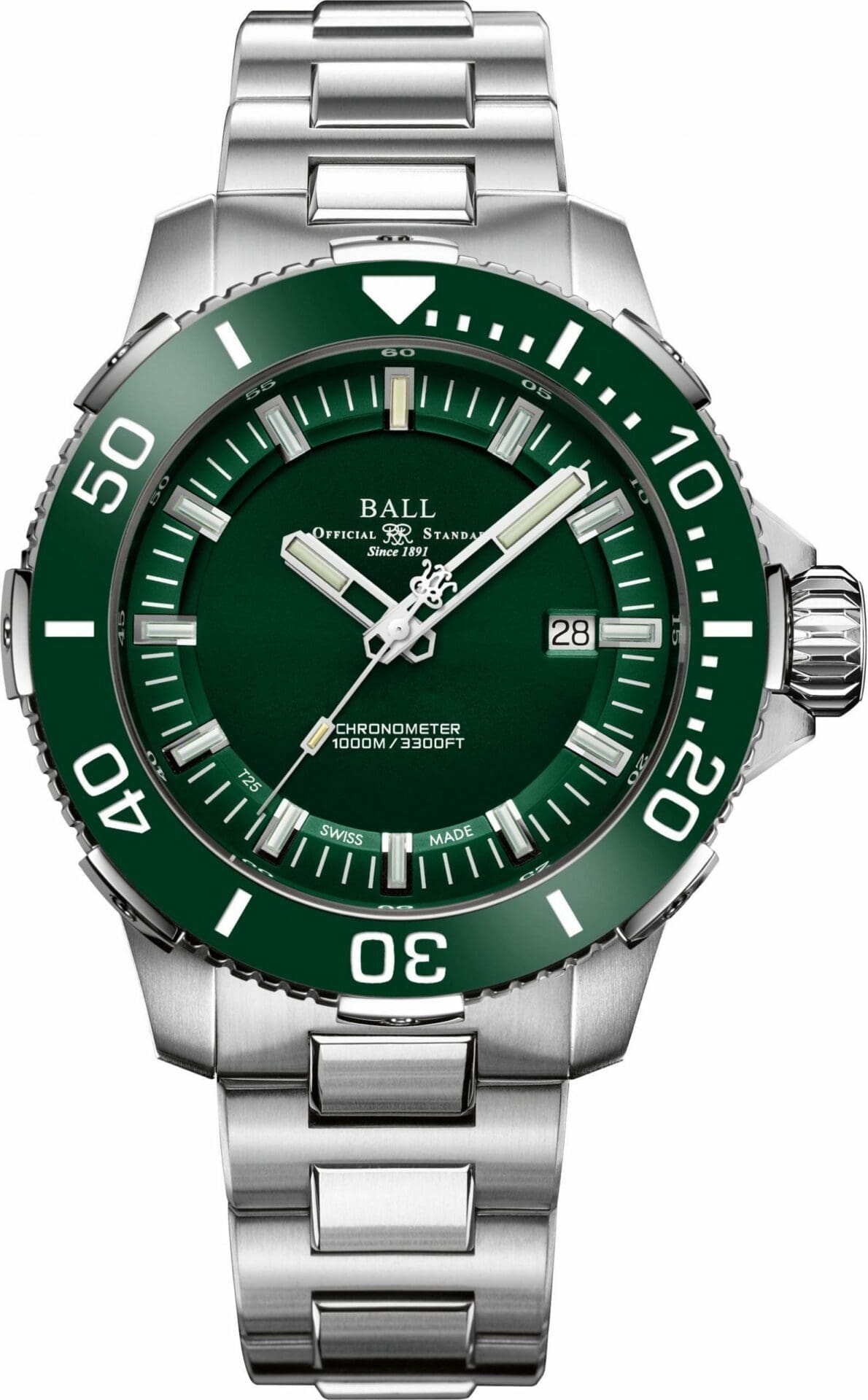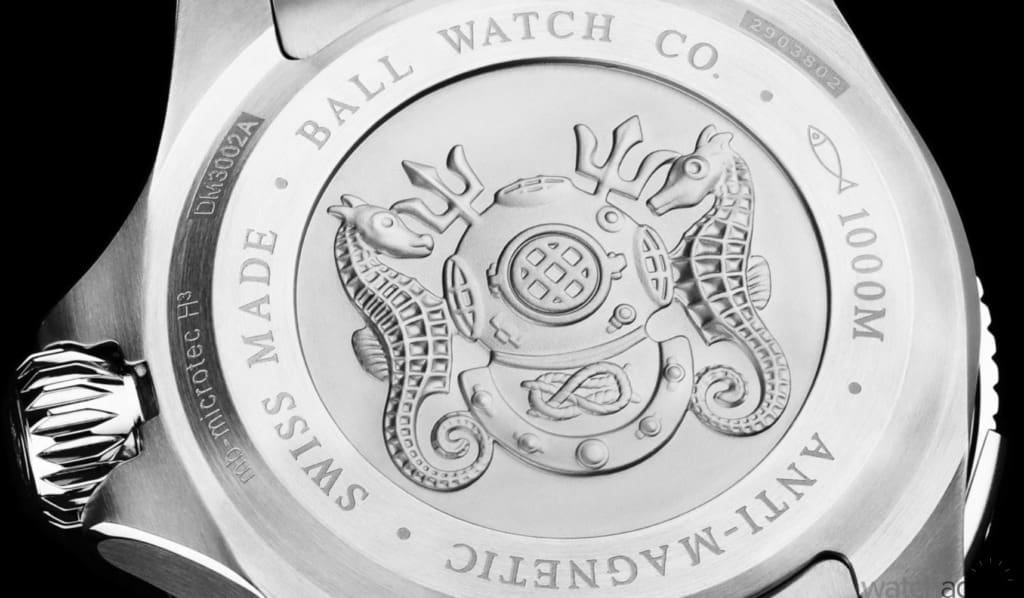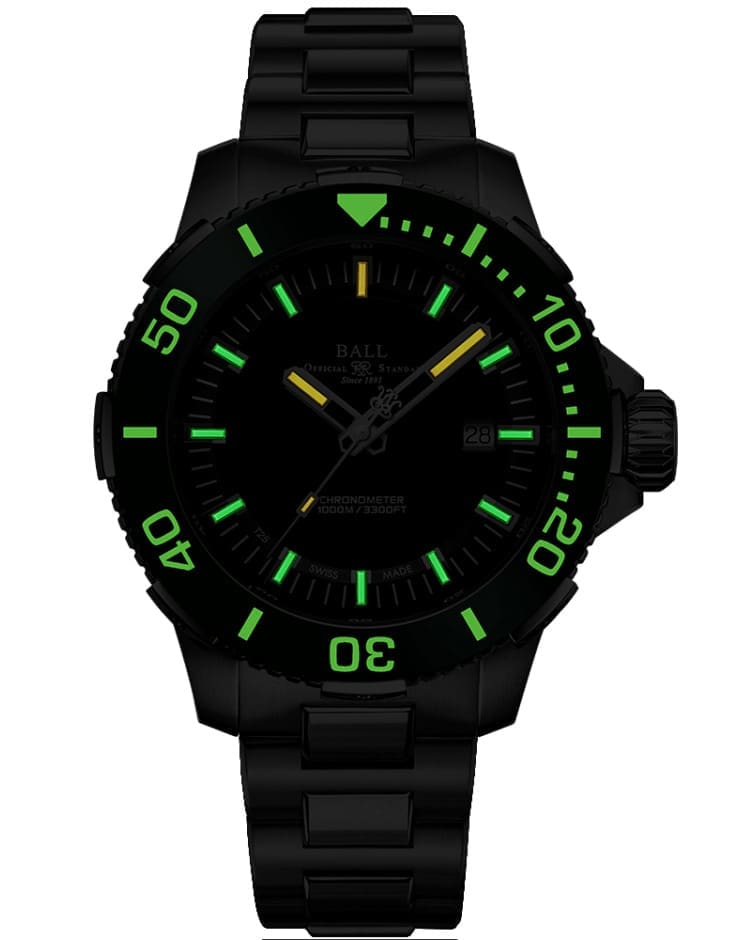VIDEO: The Ball Engineer Hydrocarbon DeepQuest II Ceramic is a beast of a dive watch – and that’s a good thing
D.C. HannayBall may not be the most recognisable name in Swiss watchmaking, but their heritage goes all the way back to 1891, and the heyday of railroad timers. In fact, due to an Ohio railroad collision (the Great Kipton Train Wreck), founder Webb C. Ball, a well-known jeweler, instituted a railroad timekeeping standard to prevent future disasters. Now known for overbuilt tool watches that offer value for the money, Ball has some pretty compelling divers in the lineup, including the titanium Engineer Hydrocarbon DeepQuest II Ceramic we’re looking at today.
The case
Let’s just get this out of the way: The DeepQuest II is a beast of a dive watch, and that’s a good thing. You won’t be slipping this under a shirt cuff, but it inspires absolute confidence over a wetsuit, given the 1,000 metre depth rating. Clocking in at 42mm in diameter, with a 15.5mm height, and 53mm lug-to-lug, the in-your-face wrist presence is weight-relieved by the titanium monobloc case. It’s milled from a single block of titanium for improved water resistance, and the titanium construction resists corrosion to seawater. This is a serious diving tool, with a clever helium escape valve built into the grippy, ribbed screwdown crown, and it’s shock resistant to 7,500 Gs and antimagnetic as well. The finish is largely brushed, with polished highlights along the bevels, and the broad, beefy lugs are drilled for easier strap swapping. There’s a great embossed caseback design too, with a diver’s helmet flanked by dual seahorses and tridents. The unidirectional bezel is secured with eight proprietary screws, the insert is ceramic, and filled with Super-LumiNova for great visibility in dark waters, and this version comes in an attractive deep forest green. A black version is also available.
The dial
One of Ball’s calling cards is its use of tritium gas tubes throughout their line, with the advantage being that no external light source is required to “charge” the lume. The tiny glass tubes are filled with tritium gas (which has a low level of radiation), activating the luminous material inside the tube. In other words, the lume on the hands and indices is “always on”, a fairly unique feature among higher-end timpieces. The lume on this model is green, with yellow on the 12 o’clock marker and hands, but Ball has other models with a rainbow’s worth of lume colours. The dial is available in black or green, with the black version giving a green and black “Starbucks” Submariner look to the watch, while the all-green variant leans toward those classic Hulk vibes. The broad, skeletonised hour and minute hands offer great legibility, and the second hand features the Ball logo as a counterweight. A small date window resides at 3, there if you need it, but if you’re a saturation diver, a date function may not be your first priority.
The movement
The Ball RR1101-C movement is Ball’s COSC-certified and chronometer-rated version of their RR1101, which itself is based on the venerable ETA 2892. Beat rate is 28,800 VPH, accuracy is good for -4/+6 seconds a day, it’s shock-protected, and has a power reserve of 42 hours, adequate, but not groundbreaking. And not that it’s visible, but the movement is nicely customised, featuring a radial pattern on the engraved rotor. Regardless, the movement should be reliable, fairly bulletproof, and easy to service.
The bracelet
The tapered titanium and stainless H-link bracelet is handsome and looks properly rugged given the Deepquest’s purpose. The titanium and stainless construction adds a bit of balance compared to an all-titanium bracelet, and the clasp features a highly functional patented diver’s extension. Attachment to the drilled lugs is via screws, which lends quite a bit of confidence, and speaks to the overall build quality and durability. A high-quality rubber strap is also available, but since the bracelet only adds $100 to the price tag, why wouldn’t you get the bracelet? Lug width is 21mm, which will limit strap choices somewhat, but aftermarket companies are expanding their lineups to include odd lug sizes, so finding something shouldn’t be too difficult.
The verdict
Once again, Ball has come up with a ruggedly handsome, highly capable tool watch at a very competitive price point, less than half of a new Submariner at retail (if such a thing exists). With its titanium construction and 1,000 metre water resistance, you’ll break down long before it will. And if you’re not familiar with tritium tube illumination, you should be, given its always-on functionality. Once you try it, you’ll wonder why you haven’t already.
Ball Engineer Hydrocarbon DeepQuest Ceramic pricing and availability:
The Ball Engineer Hydrocarbon DeepQUEST Ceramic is USD $3,899 on a rubber strap and USD $3,999 on a bracelet.
Brand – Ball
Model – Engineer Hydrocarbon DeepQuest II Ceramic
Case dimensions – 42mm diameter, 15.5mm height, 53mm lug-to-lug
Case material – Titanium
Water resistance – 1,000 metres
Crystal – Sapphire, AR coated
Dial – Black or green, tritium tube lume
Lug width – 21mm
Bracelet – Titanium and stainless with diver’s extension
Movement – Ball RR1101-C, COSC certified
Power reserve – 42 hours
Availability – Now








